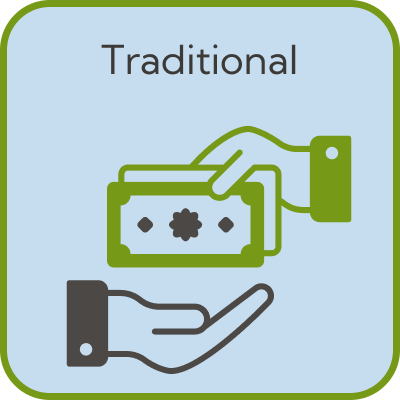Fundraise by participating in Self-organised walk backwards for a mile challenge!
Self-organised walk backwards for a mile challenge
Imagine setting out to walk a mile, but with an unconventional twist – you'll be doing it all backwards. The Self-organised Walk Backwards for a Mile Challenge invites you to test your balance, coordination, and perhaps even entertain onlookers, all for a good cause. This unique event not only provides a physical challenge but also engages your community and promotes donations through its sheer novelty and visual appeal.
Walking backwards for charity is a great idea because it instantly captures attention. This unusual activity is not only fun but also symbolically represents taking steps back to reflect on the needs of others, thereby moving forward in spirit. The visual element of walking backwards is intriguing and can easily attract media attention, giving your chosen cause further exposure. Moreover, the challenge aspect appeals to a broad audience, including fitness enthusiasts, families, and community groups, who are all potential sponsors and donors.
To organise your walk backwards challenge effectively, select a safe, preferably flat route to avoid injuries. Since walking backwards can be more physically demanding than walking normally, it’s wise to practice before the event day to get accustomed to the reversed movement. Make sure to inform local authorities if your route impacts public areas to ensure safety and compliance with local regulations. Promoting your challenge is key; use social media, local community boards, and word of mouth to spread the word. Invite friends and family to either participate with you or cheer you on, amplifying the fun and the fundraising potential.
This type of event beautifully aligns with several of Sponsivity’s challenge models. The Time Challenge model could be a great fit, where donors pledge money based on how quickly you can complete the mile. For example, increased donations for finishing under a difficult-to-achieve time might push you to strive harder. Alternatively, the Wager Challenge model could also apply, setting a fundraising goal that needs to be reached before you undertake the backwards walk. This can effectively build anticipation and encourage more donations upfront. If you're feeling particularly ambitious, transforming this activity into a Challenge Chain could exponentially increase its impact. After completing your mile, challenge others to do the same, tagging friends on social media and asking them to continue the donation cycle with their backwards walk.
Embracing such a creative fundraising event not only raises funds but also lifts spirits, promotes health, and brings communities together. By choosing the Self-organised Walk Backwards for a Mile Challenge, you’re stepping up by stepping back – all in the name of a worthy cause.

Sponsivity offers you several ways to raise for Self-organised walk backwards for a mile challenge


🚶 Walking – An Accessible & Inclusive Fundraising Challenge
Walking is one of the most accessible and inclusive ways to fundraise, making it ideal for participants of all ages and fitness levels. Whether it’s a personal step challenge, a long-distance trek, or a community walking event, walking-based fundraising is a great way to raise money while promoting physical activity and well-being.
Why Walking Works for Fundraising:
- Inclusive & Low-Impact: Walking is suitable for everyone, from young children to seniors, making it perfect for family-friendly and corporate fundraising events.
- Endurance & Achievement: Long-distance walks, such as marathon walks, charity hikes, or multi-day treks, provide a strong personal challenge that attracts donor support.
- Social & Team-Oriented: Walking challenges can be done individually or in groups, making them great for workplace fundraising, school events, or community initiatives.
- Easy to Track & Share: Fundraisers can log their daily steps, distance, or time, sharing progress with supporters through social media and fundraising pages.
Examples of Walking-Based Fundraisers:
- Step Challenge: “I’m walking 10,000 steps every day for a month—sponsor me per step!”
- Distance Challenge: “Support me as I trek 50 miles for charity!”
- Themed Walks: Fancy dress charity walks, night-time city walks, or virtual walking challenges add extra engagement.
Walking challenges offer a fun, healthy, and accessible way to raise funds while encouraging people to stay active and support a great cause!
Set bespoke rewards that suit walking
- Wear donor names on a walking vest
- Display a personalised thank-you sign and on the walk
- Videoed song dedicated to your donation
💪 Physical Endurance – A Test of Strength & Stamina for Charity
Physical endurance challenges are some of the most demanding and rewarding ways to raise money for charity. These events push fundraisers to their limits, whether through long-distance running, cycling, swimming, or multi-hour challenges, making them highly compelling for donors. The harder the challenge, the more supporters are inspired to give.
Why Physical Endurance Works for Fundraising:
- High Engagement: Donors love to support fundraisers who commit to extreme endurance challenges, seeing their dedication as a strong reason to give.
- Scalable & Inclusive: Endurance events can range from personal step challenges to Ironman triathlons, making them accessible for all fitness levels.
- Long-Term Fundraising Potential: The extended training and preparation period allow fundraisers to build momentum and keep donors engaged.
- Great for Time & Distance Challenges: Fundraisers can challenge themselves to beat a time, achieve a distance, or push beyond their limits for charity.
Examples of Physical Endurance-Based Fundraisers:
- Marathon or Ultra Run: “Help me raise £2,000 as I take on my first 100K ultra-marathon!”
- Long-Distance Cycle Challenge: “I’m cycling 1,000 miles across the UK for charity—sponsor me per mile!”
- Extreme Fitness Challenge: “I’m doing 24 hours of non-stop exercise—every donation pushes me further!”
Physical endurance fundraisers inspire, challenge, and motivate, creating an unforgettable experience for participants and a powerful reason for supporters to donate.
Set bespoke rewards that suit physical endurance
- Playlist pick - any song of your choice repeated 3 times on my playlist!
- Photo eating your chosen race snack (max 50g!)
- 20 press-ups after the finishline
🧠 Mental Challenge – Pushing Limits for a Good Cause
Mental challenges test focus, resilience, and determination, making them a unique and engaging way to fundraise. These challenges often involve problem-solving, endurance under pressure, or personal restrictions, such as memory feats, puzzle marathons, or digital detoxes. Fundraising through mental challenges allows participants to showcase their mental strength and discipline, inspiring supporters to donate.
Why Mental Challenges Work for Fundraising:
- Highly Inclusive: Unlike physical challenges, mental challenges can be attempted by anyone, regardless of fitness level.
- Great for Social Engagement: Challenges like chess marathons, escape room events, or language-learning goals are easy to share and track online.
- Endurance & Dedication: Tasks that test patience and willpower—like 24-hour challenges—demonstrate commitment, motivating donors to give.
- Unique & Entertaining: Creative challenges stand out, making them highly shareable on social media and drawing attention to the cause.
Examples of Mental Challenge-Based Fundraisers:
- Memory Challenge: “I’m memorizing 500 digits of Pi—sponsor me to support dementia research!”
- Endurance Puzzle Challenge: “Help me complete 10,000 Sudoku puzzles in a month for charity!”
- No-Talking or Digital Detox Challenge: “Support my 48-hour silent retreat—every donation helps my cause!”
Mental challenges showcase creativity, discipline, and perseverance, making them a fun and inspiring way to raise money while pushing personal limits.
Set bespoke rewards that suit mental challenge
- Join me in my challenge for 1 day
- Get defeated by me at chess online during the challenge
📅 Self-Organised – Fundraising on Your Terms
Self-organised fundraising challenges put you in control, allowing fundraisers to create a challenge that’s unique, personal, and tailored to their passions. Unlike organised events, self-organised challenges offer complete flexibility—whether it’s a solo endurance test, a creative personal challenge, or a community-driven activity.
Why Self-Organised Challenges Work for Fundraising:
- Full Flexibility: Choose the activity, location, and timing that works best for you, making fundraising accessible and achievable.
- Personal & Meaningful: Custom challenges allow fundraisers to connect with their audience by choosing something significant to them.
- Low-Cost & Inclusive: Without the need for event entry fees or logistics, anyone can participate, making it easy to involve family, friends, or colleagues.
- Perfect for Challenge Chain & Wager Models: Self-organised challenges can inspire others to join in, spreading the impact through viral nominations.
Examples of Self-Organised Fundraisers:
- Personal Running Challenge: “I’ll run 5K every day for a month—support my journey!”
- DIY Fitness Marathon: “I’m doing 1,000 push-ups in a day—every donation pushes me further!”
- Creative Challenge: “I’ll cycle across the country dressed as a superhero—help me hit my fundraising goal!”
Self-organised challenges allow fundraisers to turn their creativity, passions, and dedication into real impact, making it a powerful and accessible way to raise money for a cause.
Set bespoke rewards that suit self-organised event
- Rename the challenge in your honour
- Bring home-baked cookies to the finishline